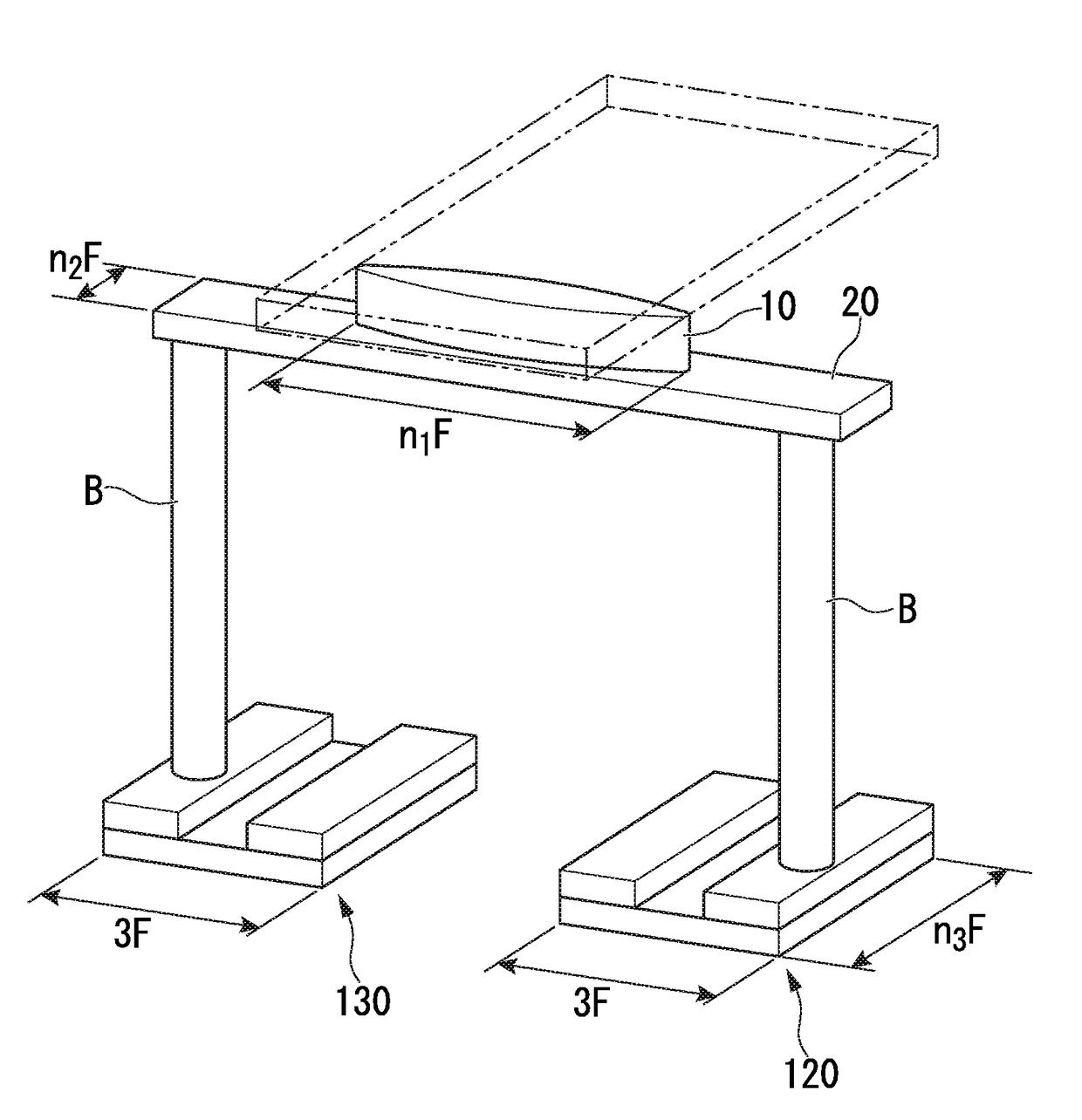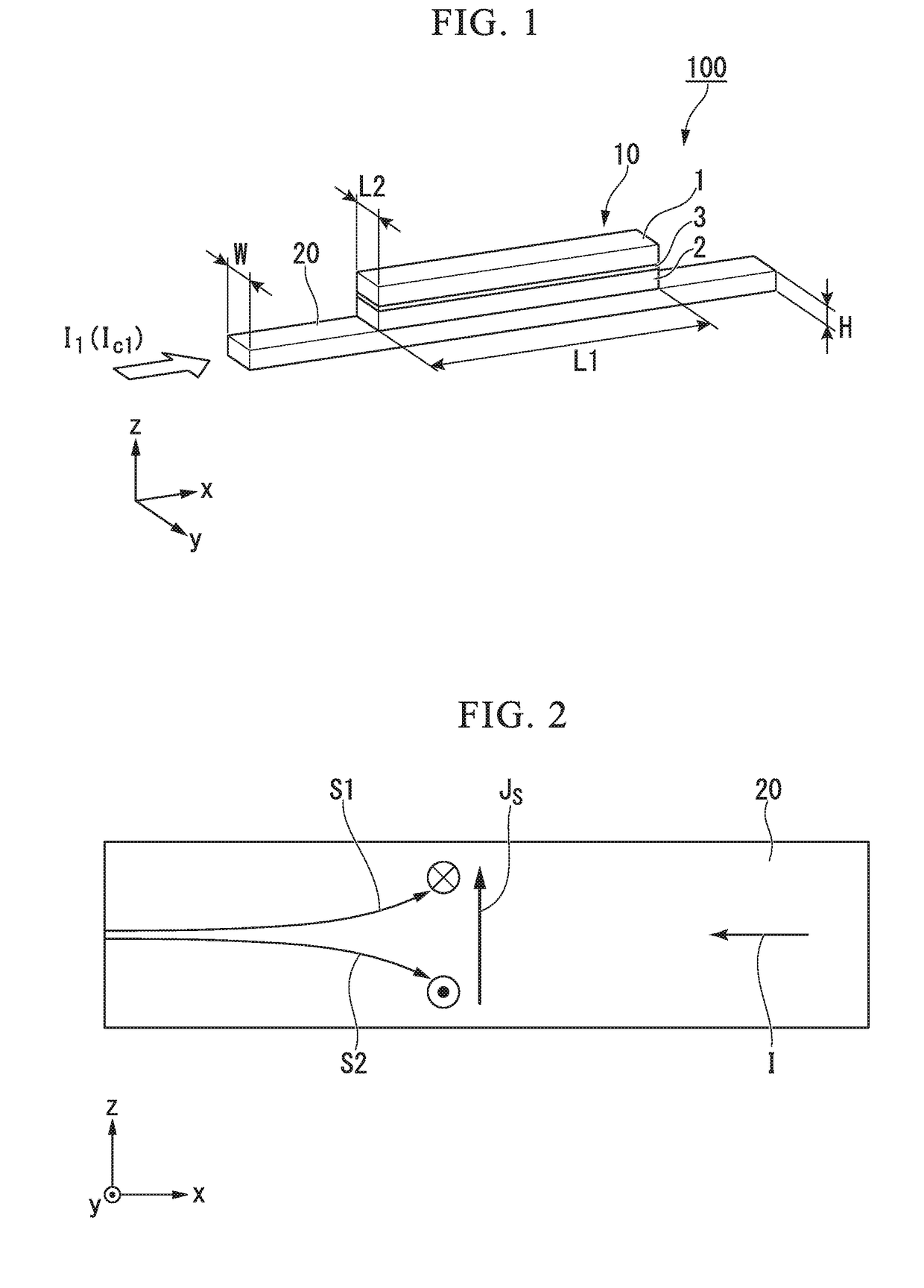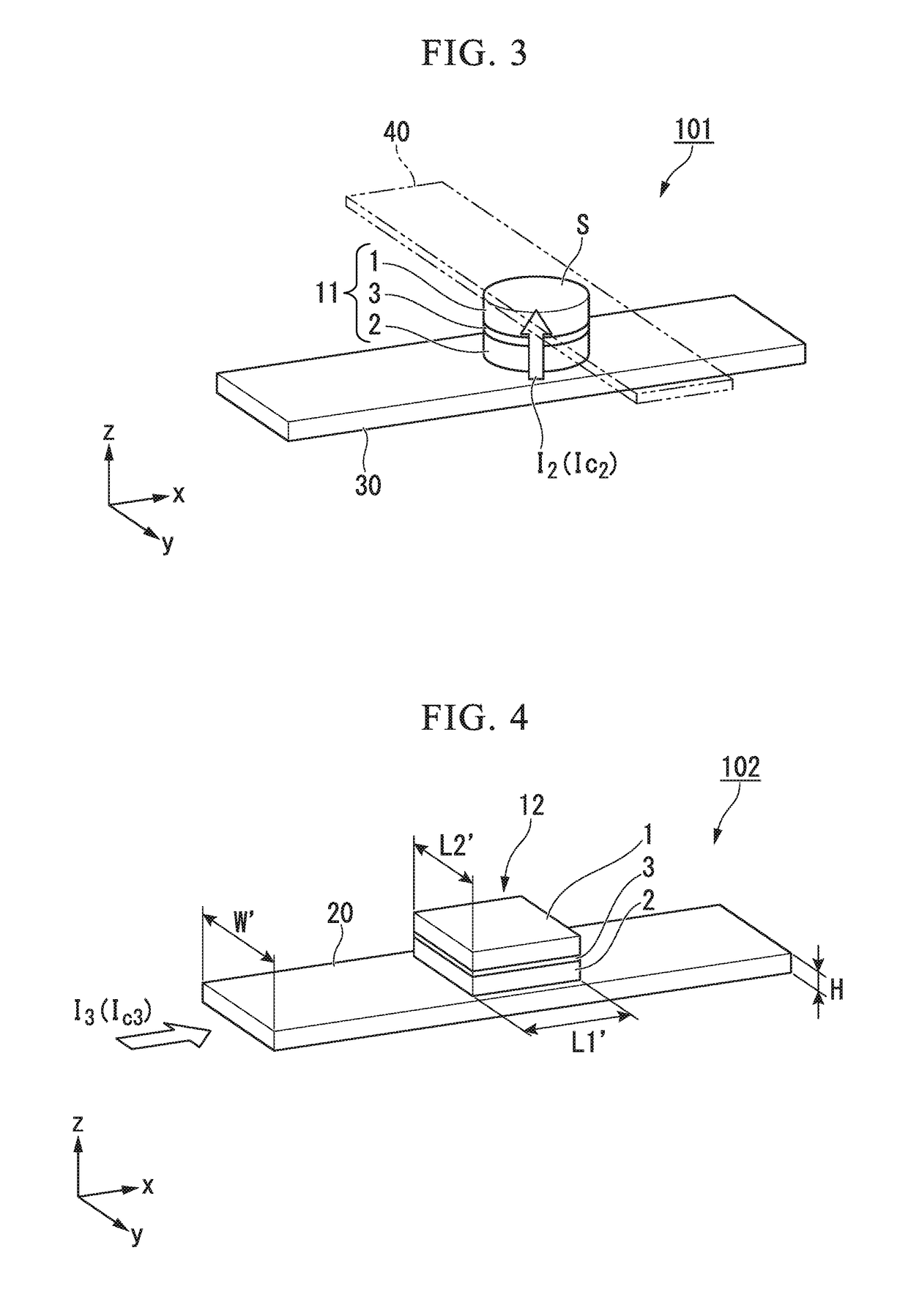Spin-orbit torque type magnetoresistance effect element, and method for producing spin-orbit torque type magnetoresistance effect element
a technology of spin-orbit torque and effect elements, which is applied in the direction of instruments, galvano-magnetic hall-effect devices, and record information storage, etc., can solve the problems of affecting the operation life of the element, affecting the overall amount of mram needed, and affecting the current amount of mram required. , to achieve the effect of higher outpu
- Summary
- Abstract
- Description
- Claims
- Application Information
AI Technical Summary
Benefits of technology
Problems solved by technology
Method used
Image
Examples
Embodiment Construction
[0042]The present invention is described below in further detail, with reference to the drawings. The drawings used in the following description may be drawn with specific portions enlarged as appropriate to facilitate comprehension of the features of the present invention, and the dimensional ratios and the like between the constituent elements may differ from the actual values. Further, the materials and dimensions and the like presented in the following examples are merely examples, which in no way limit the present invention, and may be altered as appropriate within the scope of the present invention.
(Spin-Orbit Torque Type Magnetoresistance Effect Element)
[0043]FIG. 1 is a perspective view schematically illustrating a spin-orbit torque type magnetoresistance effect element according to a first embodiment.
[0044]The spin-orbit torque type magnetoresistance effect element 100 according to the first embodiment has a magnetoresistance effect element 10 and spin-orbit torque wiring 2...
PUM
 Login to View More
Login to View More Abstract
Description
Claims
Application Information
 Login to View More
Login to View More - R&D
- Intellectual Property
- Life Sciences
- Materials
- Tech Scout
- Unparalleled Data Quality
- Higher Quality Content
- 60% Fewer Hallucinations
Browse by: Latest US Patents, China's latest patents, Technical Efficacy Thesaurus, Application Domain, Technology Topic, Popular Technical Reports.
© 2025 PatSnap. All rights reserved.Legal|Privacy policy|Modern Slavery Act Transparency Statement|Sitemap|About US| Contact US: help@patsnap.com



